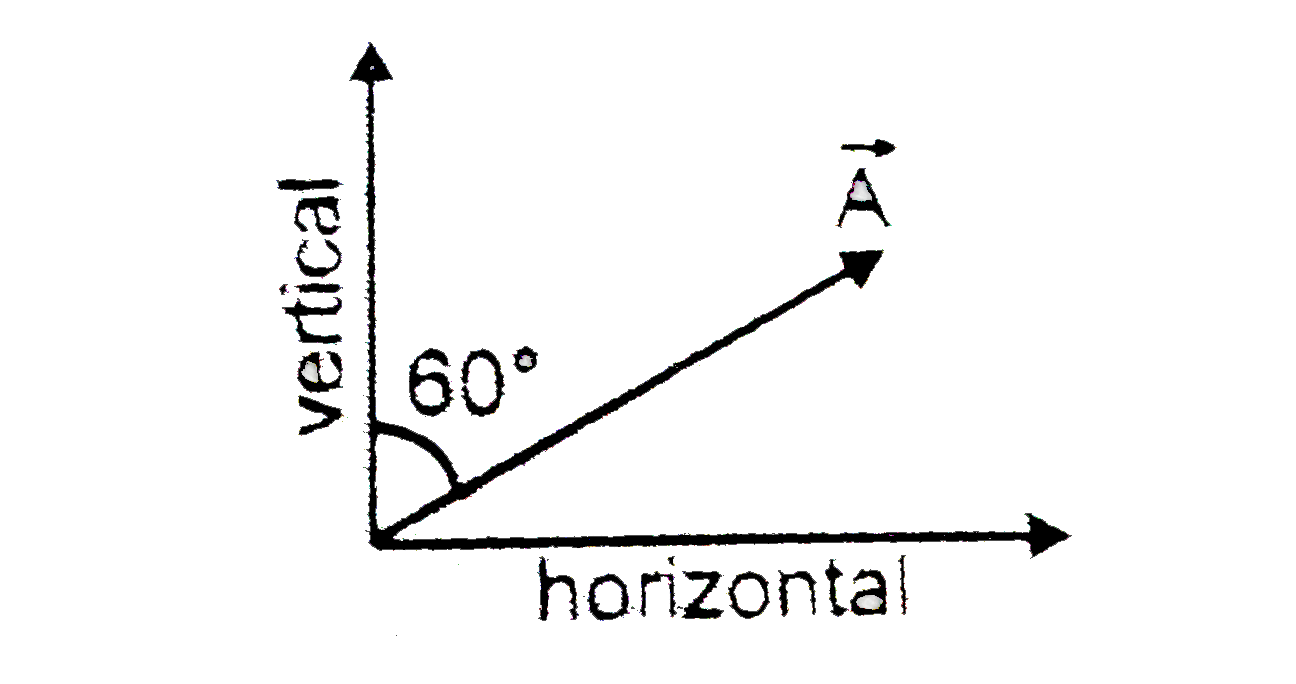Hailstrom are observed to strike the surface of a frozen lake in a direction making an angle of 30∘ to the vertical and to rebound at an angle of 60∘ to the vertical. Assuming the contact to be smooth, the coefficient of restitution is
1/3
2/3
1/√3
None of these
The correct Answer is:A
To find the coefficient of restitution (e) for the hailstones striking and rebounding off the surface of a frozen lake, we can follow these steps:
Step 1: Understand the Angles
The hailstones strike the surface at an angle of 30° to the vertical. This means the angle to the horizontal (the surface of the lake) is:
θ1=90°−30°=60°
Similarly, they rebound at an angle of 60° to the vertical, which means the angle to the horizontal is:
θ2=90°−60°=30°
Step 2: Resolve the Velocities
Let’s denote the velocities of the hailstones just before impact and just after rebounding as v1 and v2 respectively. We need to resolve these velocities into components parallel and perpendicular to the surface of the lake.
The vertical component of the velocity before impact is:
v1y=v1cos(60°)=v1⋅12
The horizontal component of the velocity before impact is:
v1x=v1sin(60°)=v1⋅√32
The vertical component of the velocity after rebounding is:
v2y=v2cos(30°)=v2⋅√32
The horizontal component of the velocity after rebounding is:
v2x=v2sin(30°)=v2⋅12
Step 3: Apply the Coefficient of Restitution Formula
The coefficient of restitution (e) is defined as the ratio of the relative speed after the collision to the relative speed before the collision, specifically in the direction perpendicular to the surface:
e=Relative speed afterRelative speed before=v2yv1y
Step 4: Substitute the Components
Substituting the vertical components into the equation:
e=v2⋅√32v1⋅12=v2⋅√3v1
Step 5: Find the Relationship Between v1 and v2
Since the hailstones rebound at an angle, we can relate v1 and v2 using the angles:
From the conservation of momentum in the vertical direction (assuming no energy loss in the horizontal direction due to smooth contact):
v1y=e⋅v2y
Substituting the expressions for v1y and v2y:
v1⋅12=e⋅v2⋅√32
Rearranging gives:
e=v1v2⋅1√3
Step 6: Calculate the Coefficient of Restitution
From the angles, we can see that:
v1v2=sin(60°)sin(30°)=√3212=√3
Now substituting back into the equation for e:
e=√3⋅1√3=1
Final Answer
The coefficient of restitution is:
1
The hailstones strike the surface at an angle of 30° to the vertical. This means the angle to the horizontal (the surface of the lake) is:
θ1=90°−30°=60°
Similarly, they rebound at an angle of 60° to the vertical, which means the angle to the horizontal is:
θ2=90°−60°=30°
Let’s denote the velocities of the hailstones just before impact and just after rebounding as v1 and v2 respectively. We need to resolve these velocities into components parallel and perpendicular to the surface of the lake.
v1y=v1cos(60°)=v1⋅12
The horizontal component of the velocity before impact is:
v1x=v1sin(60°)=v1⋅√32
v2y=v2cos(30°)=v2⋅√32
The horizontal component of the velocity after rebounding is:
v2x=v2sin(30°)=v2⋅12
The coefficient of restitution (e) is defined as the ratio of the relative speed after the collision to the relative speed before the collision, specifically in the direction perpendicular to the surface:
e=Relative speed afterRelative speed before=v2yv1y
Substituting the vertical components into the equation:
e=v2⋅√32v1⋅12=v2⋅√3v1
Since the hailstones rebound at an angle, we can relate v1 and v2 using the angles:
From the conservation of momentum in the vertical direction (assuming no energy loss in the horizontal direction due to smooth contact):
v1y=e⋅v2y
Substituting the expressions for v1y and v2y:
v1⋅12=e⋅v2⋅√32
Rearranging gives:
e=v1v2⋅1√3
From the angles, we can see that:
v1v2=sin(60°)sin(30°)=√3212=√3
Now substituting back into the equation for e:
e=√3⋅1√3=1
The coefficient of restitution is:
1
Similar Questions
A force of 10.5 N acts on a particle along a direction making an angle of 370 with the vertical. Find the component of the force in the vertical direction.
View SolutionA bird moves with velocity 20m/s in a direction making an angle of 60∘ with the eastern line and 60∘ with the vertical upward. Represent the velocity vector in rectangular form.
View Solution
Knowledge Check
Hailstorms are observed to stike the surface of a frozen lake at an angle of 30∘ with the vertical and rebound at an angle of 60∘ with vertical. Assuming the contact to be smooth, the coefficient of restitution is
A1/4B1/3C1/5D3/4A particle strikes a horizontal frictionless floor with a speed 'u' at an angle 'theta' with the vertical and rebounds with a speed 'v' at an angle 'alpha' with the vertical. Find the value of 'v' if 'e' is the coefficient of restitution.
Av=u√e2sin2θ+cos2θBv=u√e2cos2θ+sin2θCv=u√e2cos2θ+tan2θDv=u√cot2θ+e2cos2θA particle is projected with an initial velocity of 200m/s in a direction making an angle of 30∘ with the vertical. The horizontal distance covered by the particle in 3s is
A300mB150mC175mD125m
A plane wavefront incident on a reflecting surface at and angle of 30∘ with vertical. Find the angle (acute) of reflected wave with vertical.
View SolutionA force of 4N is inclined at an angle of 60∘ from the vertical. Find out its components along horizontal and vertical directions.

View SolutionA bird moves with velocity 20ms−1 in a direction making an angle of 60∘ with vertical upward .Represent the velocity vector in a rectangular form.
View SolutionA smooth circular table is surrounded by a rim whose interior is vertical . A ball is projected along the table from a point on the rim in a direction making an angle θ to the radius through the point and returns to the point of projection after two impacts . If e be the coefficient of restitution, then
View SolutionA pendulum is hanging from the ceiling of a railway carriage making an angle of 30∘ with the vertical direction . The acceleration of the carriage is :
View Solution
